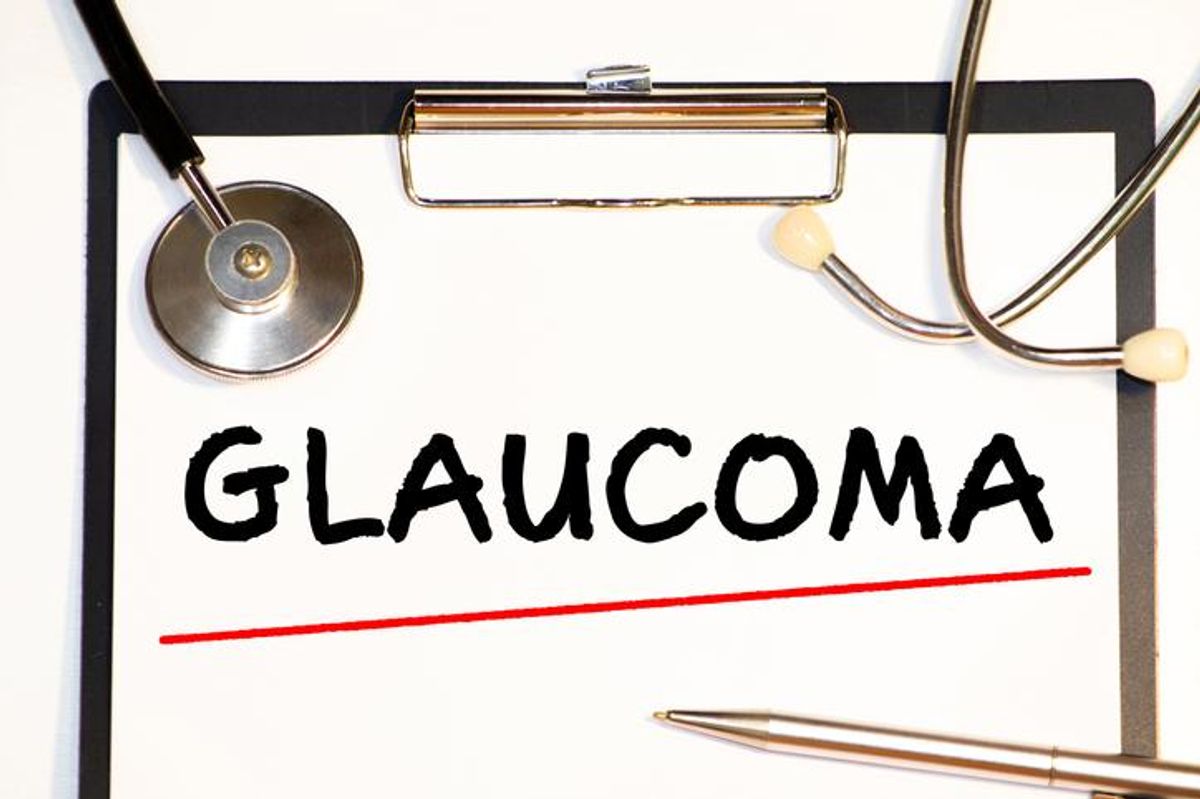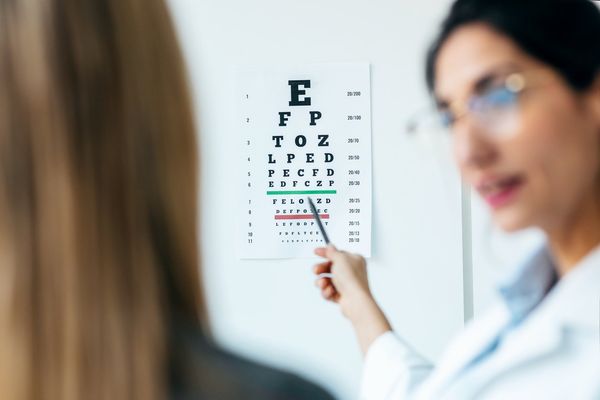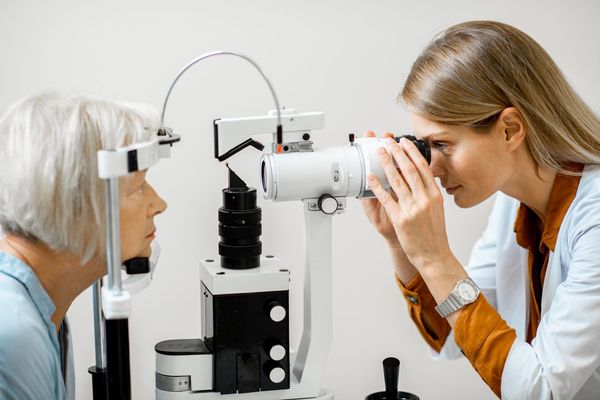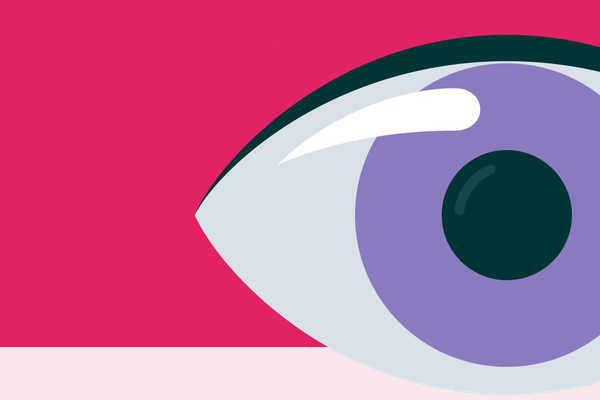January is National Glaucoma Awareness Month.
What is glaucoma?
Glaucoma is a condition that affects the eyes. About 3 million people in the U.S. have glaucoma.
Typically, glaucoma occurs because there’s increased pressure inside the eye. The extra pressure can damage the optic nerve over time and cause you to gradually lose your vision.
Your eye is filled with a clear fluid called aqueous humor. In a healthy eye, there’s a balance between fluid being made and fluid draining from the eye through its drainage system. When fluid builds up and isn’t being drained correctly, the pressure in your eye can build. This can damage the optic nerve fibers in the eye, which can lead to vision loss. Untreated, glaucoma can lead to blindness.
There are several types of glaucoma, but the two main types are primary open-angle glaucoma and angle-closure glaucoma. Primary open angle glaucoma usually has no symptoms and vision loss is gradual over time. Angle-closure glaucoma can be acute, and associated with pain and vision changes. Almost all glaucoma types involve increased eye pressure. But, in rare instances, glaucoma can occur despite “normal” pressure readings inside the eye.
Who is at risk for glaucoma?
Your chances of developing glaucoma increase if you have certain factors, such as:
- Being over age 60
- Being of African, Asian or Hispanic descent
- Having a family history of glaucoma
- Having increased eye pressure or thin corneas
- Being nearsighted or farsighted
- Having certain medical conditions, including diabetes, high blood pressure and heart disease
- Taking steroid medications long-term
- Having had an eye injury
Why are women more likely to get glaucoma?
Because of their longer life expectancy, women account for six out of 10 glaucoma cases in the U.S. In addition to age being a factor, estrogen may also play a role.
Research suggests that declining estrogen levels at an earlier age, such as early menopause, could cause the optic nerve to age faster than normal. This aging might leave the nerve more likely to be damaged by glaucoma. One recent study found that increased levels of estrogen might slow the development of glaucoma.
What are the symptoms of glaucoma?
Symptoms depend on which type of glaucoma you have.
Open-angle glaucoma:
Open-angle glaucoma doesn’t usually cause any symptoms, which is why half of those with this type of glaucoma don’t even know they have it. However, as the condition worsens, you might notice blind spots in your peripheral (side) vision.
Angle-closure glaucoma:
Angle-closure glaucoma occurs when there has been a sudden blockage to the eye drainage system. This causes pressure to build up quickly in the eye. Initially, you may have mild symptoms such as blurry vision, seeing halos or eye pain. These need to be addressed right away. An acute angle-closure glaucoma attack is a medical emergency and can lead to permanent blindness if not treated.
How does glaucoma get diagnosed?
To get a diagnosis of glaucoma, you will need to see an ophthalmologist, a doctor who specializes in eye diseases, for an eye exam. The ophthalmologist will gather information and perform a variety of tests, which might include:
- Asking questions about your family history
- Checking your vision, including using perimetry for your peripheral vision
- Measuring the pressure in your eye using tonometry
- Performing a pachymetry test to measure the thickness of your cornea
- Using ophthalmoscopy to examine your eyes for optic nerve damage
- Performing gonioscopy to see how open the area of the eye that drains fluid is
How is glaucoma treated?
There is no cure for glaucoma, which is why having regular eye exams is important to catch any concerns quickly. Getting proper treatment can help stop the progression of damage from glaucoma.
Prescription eye drops
Glaucoma medication usually involves eye drops. These medications work by reducing eye pressure and protecting the optic nerve from damage. They can’t improve your vision, but they can work to keep your glaucoma from getting worse and prevent further vision loss.
You might have side effects from the drops, including red, itching or stinging eyes; blurry vision; or even a change in your eye color. Don’t stop taking the drops without talking with your healthcare provider (HCP).
Laser treatment
A treatment called laser trabeculoplasty uses a laser beam to help drain the fluid from the eye. This treatment is usually performed for open-angle glaucoma. The results can last two to three years, so you might have to repeat the procedure in the future.
For people who have angle-closure glaucoma, a laser iridotomy procedure uses a laser to make a small hole in the iris to help fluid drain more effectively.
Surgery
Surgery may be needed if medications and laser treatments aren’t helping.
Trabeculectomy involves a surgeon making a small hole on top of the eye. Extra fluid drains from this hole to decrease eye pressure.
In glaucoma implant surgery, the surgeon places a tiny tube into the sclera — the white part of the eye. This drains fluid from the eye and decreases eye pressure.
Micro-invasive or minimally invasive glaucoma surgery (MIGS) is a newer treatment that works to lower eye pressure but has fewer side effects and risks, and faster recovery times, than other surgeries. This is because it uses smaller surgical instruments and incisions than in traditional glaucoma surgeries. MIGS is most often used for people with mild to moderate open-angle glaucoma. More studies are being done to determine the long-term safety and effectiveness of this procedure.
If you are concerned that you might have glaucoma or are at risk, talk with your healthcare provider. They can help you come up with a treatment plan that will work for you.
This resource was created with support from Glaukos.
- Eye Conditions & Disorders - HealthyWomen ›
- Glaucoma ›
- What You Need to Know About Glaucoma: Q&A With Dr. Marlene R. Moster ›
- A Glaucoma Diagnosis: Looking Beyond Drops for the Best Treatment Options - HealthyWomen ›






